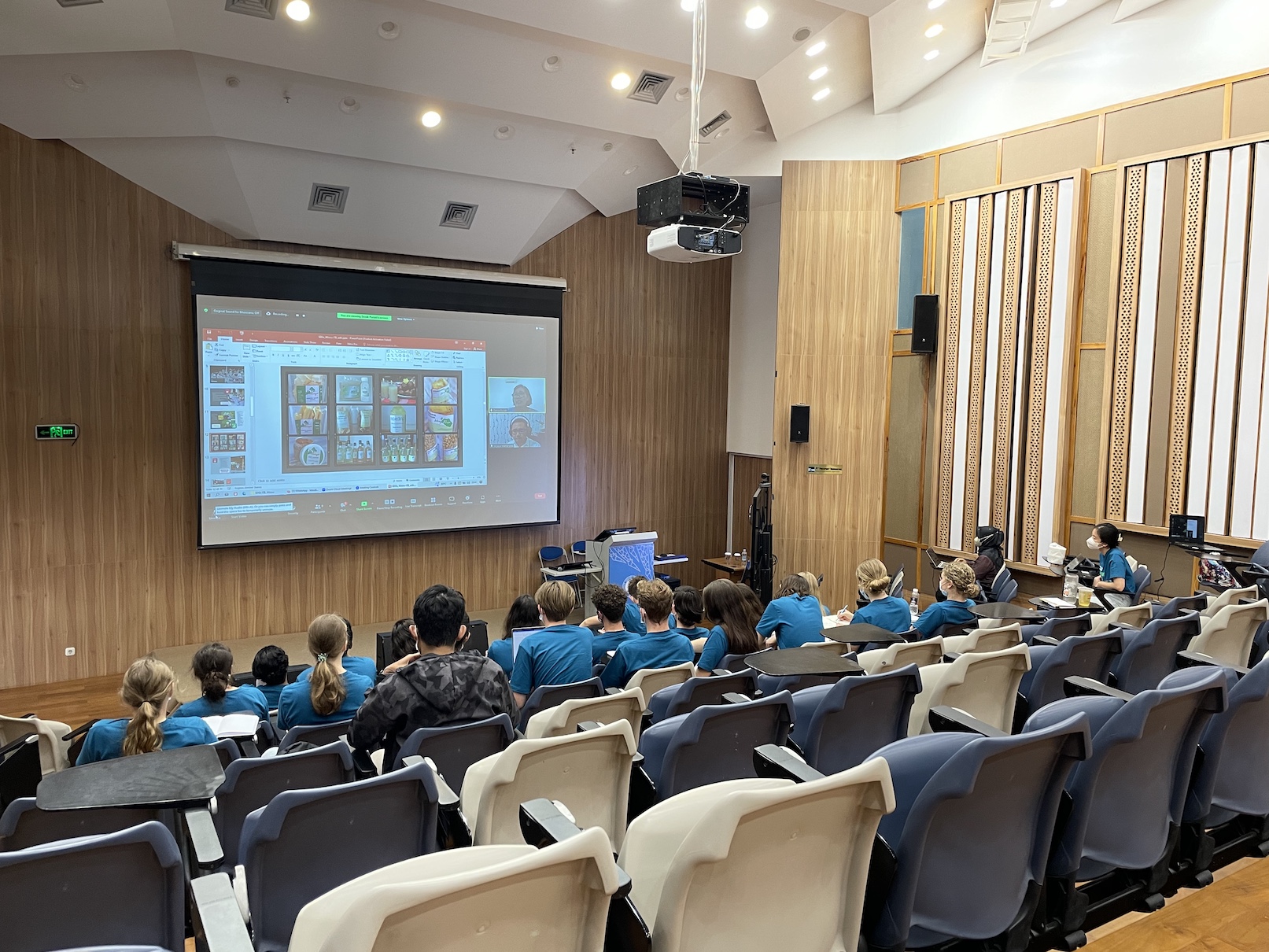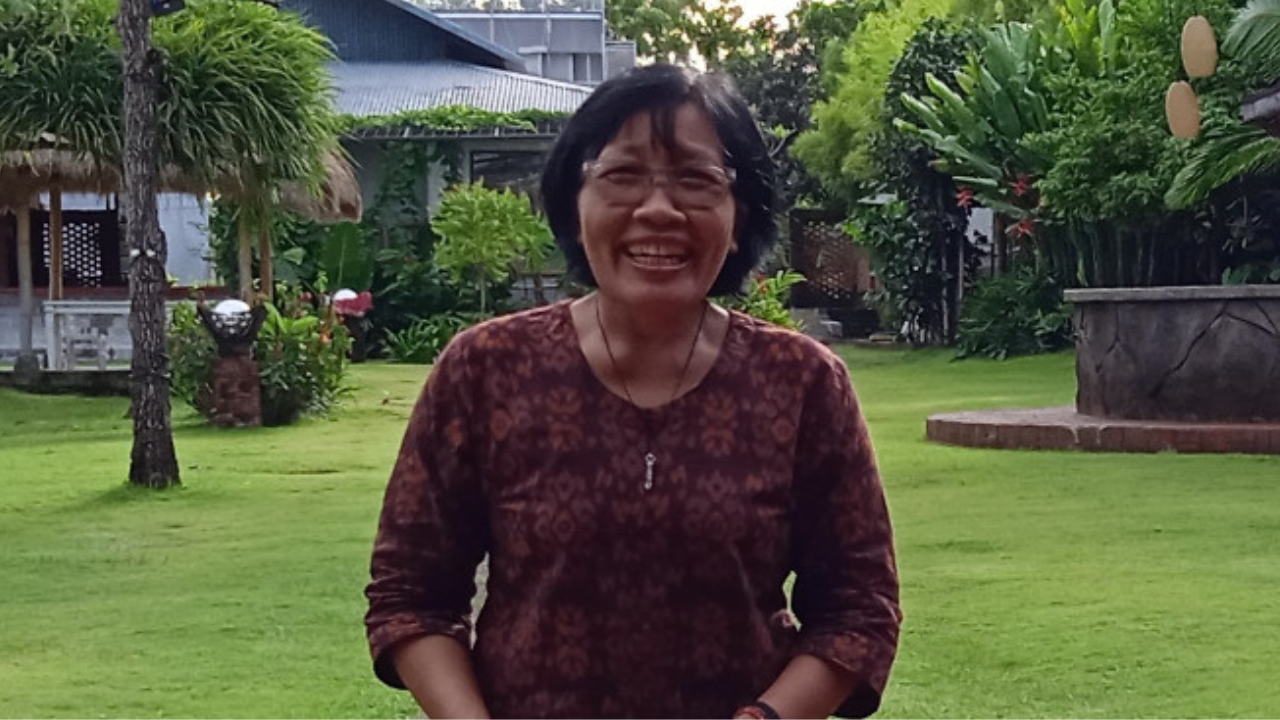SBM ITB holds an International Virtual Course 2022 with the theme Empowerment of Community Toward Circular Economy Through Collaboration on Thursday (1/12). Dozens of participants received materials related to sustainable village development (Sustainable Development Goals) from the Wisnu Foundation at the Labtek Auditorium XIX PT Freeport Indonesia Building, SBM ITB, Bandung.
The Wisnu Foundation, currently chaired by Made Denik Puriati, was founded in 1993. The Wisnu Foundation operates in seven working areas in Bali, including Buleleng, Bangli, Karangasem, Jembrana, Tabanan, Klungkung, and Badung. The Wisnu Foundation also provides community studies and assistance in other areas of Indonesia, including Wonosobo Regency, Pasuruan Regency, Nusa Tenggara, Sulawesi, Maluku, and Papua.
The presence of the Wisnu Foundation was motivated by tourism challenges in managing plastic waste, whose program was later called the Plastic Pyramid. One of the activities of the program is the management of plastic waste into bricks. Since 1999, the Wisnu Foundation has been focusing on managing Community Resources (SDK) as an effort toward a Great Village.
The Wisnu Foundation’s guidelines for the Village SDGs program are the Practice Phase, which begins with Research and Mapping to identify problems related to physical and social elements in the community. At the research and mapping stage, there is the management authority for local governments to manage their territory.
The second stage is Resource Management, starting from empowering and developing community businesses and planning development in the village. Finally, the third stage is the Documentation stage. Documentation can be done through books, videos, and other media.
The Village Sustainable Development Goals (SDGs) are a manifestation of Law no. 6 of 2014 concerning Villages. The law stipulates seven criteria for a Great Village: tough, sustainable, healthy, smart, prosperous, advanced, and democratic.
The Sustainable Development Goals (SDGs) for Villages focus on 18 indicators categorized into four reference pillars for Village SDGs. Pillar 1 is social, which includes villages without poverty; villages without hunger; healthy and prosperous villages; quality village education; and involvement of village women. The fifth indicator is realized by involving women in village development planning and implementation to achieve equality.
The second pillar is the economy. This pillar includes clean and renewable energy villages; evenly distributed village economic growth; village infrastructure and innovation as needed; village without gaps; partnership for village development. This pillar has been realized through the Village Ecotourism Network (JED) since 2002.
The third pillar is the environment, including clean water and decent sanitation villages; safe and comfortable village residential areas; environmentally conscious village consumption and production; climate change responsive villages; marine environment care villages; land environment care villages.
The fourth pillar is law and governance, covering a village of peace and justice, dynamic village institutions, and adaptive village culture.
“There are three things that we usually do in realizing this last indicator, namely the participation of religious leaders in village development activities, preserving mutual help and mutual cooperation activities, and preserving village culture,” said Denik.
The role of various parties is needed to optimize the management of community resources, including tourists. Tourists can contribute to the community to achieve the Village Sustainable Development Goals (SDGs) by participating in implementing the four existing pillars.
Finally, documentation plays an important role in addition to realizing the four pillars of the Village SDGs.
“Documentation is important as records protect part of what is owned by the community, one of which is culture,” added Denik.





